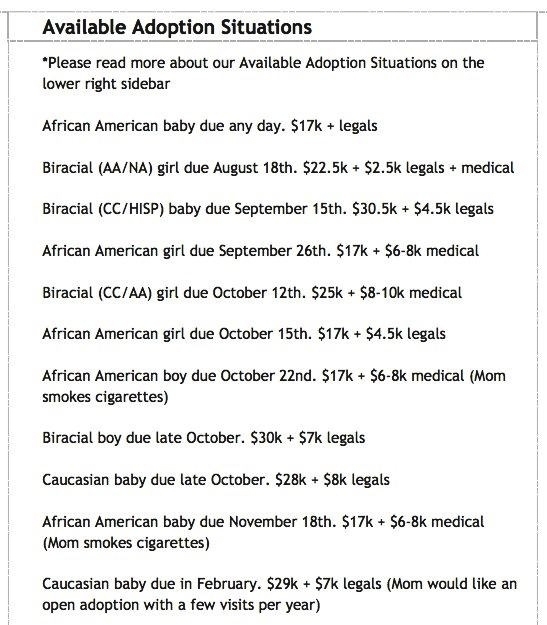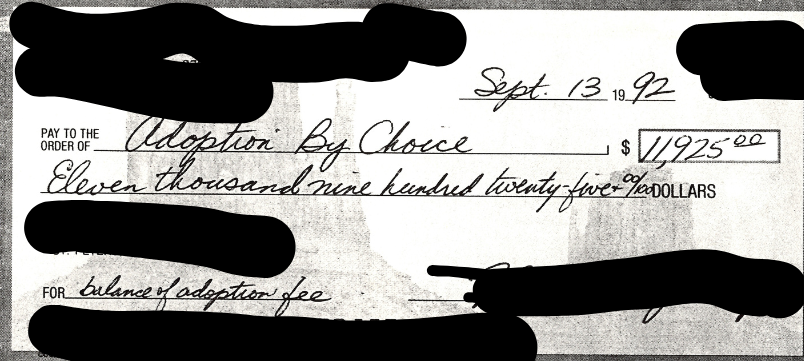By Jenny Day
Over two million couples in the United States of America are currently waiting for their bumble…or rather, bundle of joy. Maybe the call will come today, or tomorrow. Babies are born everyday, after all! But in the recent decades, adoption rates have continued to decline, leaving hopeful adoptive parent waiting lists to grow endlessly. The decrease of relinquished babies and young children began in 1973 with the landmark Supreme Court decision of Roe v Wade. With widely available abortion access, and effective forms of contraception, the birth rate of shiny new Adoptees sunk, leaving hopeful adoptive parents’ arms without any bumble to hold.
Roe v Wade was a groundbreaking ruling that allowed women, and others with the capacity for pregnancy in the United States to access abortion care up to the point of viability. The ruling was never without controversy, and was opposed by many religious groups and right-wing politicians until it was eventually overturned in 2022. This overturning was made possible by three Trump appointed Supreme Court Justices, Neil Gorsuch, Brett Kavanaugh, and Amy Coney Barrett. Abortion access was no longer a federal matter, but was instead pushed back to the states, with now 50 vastly different sets of abortion laws governing the country. Women, and others with the capacity for pregnancy, in many republican conservative states have lost the right to abortion care, and must sometimes travel thousands of miles to access the healthcare they seek. But the question remains, was abortion access revoked to “save the babies” as many Republican and religious leaders proclaim, or was there an ulterior motive?
Justice Samuel Alito provides one such motive in a footnote of his majority opinion on page 34: “… nearly 1 million women were seeking to adopt children in 2002 (i.e., they were in demand for a child), whereas the domestic supply of infants relinquished at birth or within the first month of life and available to be adopted had become virtually nonexistent.” This footnote comes from a 2002 CDC report, documenting adoption experiences.
Alito, and other justices, referred to the dwindling Adoptee supply as a legitimate reason to abolish federal mandated abortion access. Two million couples are waiting; perhaps if we up the supply, and meet the demand, the business of adoption can continue to grow. As an Adoptee, being referred to as a “supply” was nothing new. The system of adoption in the United States is unlike any other country in the world. It is an industry where the products are human beings sold for profit.
As an Adoptee, being referred to as a “supply” was nothing new.
Vulnerable women, as well as others capable of pregnancy, are used as vessels to grow the product. While it is illegal for biological parents to benefit from the sale of their children, adoption agencies and lawyers are well within their rights to make a profit. As of 2023, the infant adoption industry was valued at 25.1 billion USD, with babies priced at various rates depending on the age, race, sex, and whether or not the baby has a disability. Currently, the cheapest baby to adopt is a Black disabled male child, and the most expensive is a non-disabled white female child (prices vary by state and agency).

The price to adopt has increased significantly in the last few decades. In the 1990s, the adoption of an infant child ranged between 10-30,000 USD. In 1992, a couple from Missouri adopted a baby of Korean, Indigenous Puerto Rican, andPolish descent. In total, they paid approximately 15,000 USD to adopt her. The final check to purchase her was 11,925 USD. Because she was not fully white, she was not as desirable, and therefore came at a discounted price. Today, 32 years later, she is posting the check that purchased her in this magazine, so no one forgets that children are products of an industry in the United States.’

Today, couples regularly spend well over 70,000 USD for desirable children when including travel expenses, lawyer fees, and other incidentals. To fund their endeavors, hopeful adoptive parents post go-fund-me links, host church bake sales, or take out loans. Interesting to note here, the number one reason biological parents relinquish their child is solely due to financial and economical reasons.
Sometimes, adoptive parents don’t get exactly what they paid for with their Adoptee. Many adoptive parents have tried unsuccessfully to have biological children. In order to conceive, couples attempt insemination, in vitro fertilization, injections, surgeries, and more. Adoption, for many couples, is the last resort, and their last chance to become parents. All of their hopes, dreams, and plans rest in that little adopted bumble (bundle) of joy. Adoptees are at a significant increase in risk of neglect, abuse, and mistreatment at the hands of their adoptive parents, than a child living with their biological family. According to PubMed: Risk of maltreatment, death also was elevated for children residing with step, foster, or adoptive parents (aOR: 4.7; 95% CI: 1.6-12.0).
Adoptees are at a significant increase in risk of neglect, abuse, and mistreatment at the hands of their adoptive parents, than a child living with their biological family.
The dark truth of adoption is that Adoptees are at a much higher risk for severe developmental and behavioral issues. Higher rates of abuse in the adoptive home only lead to a further increase of risk. Adoptees are both at a heightened risk to murder their adoptive parents, as well as be murdered by their adoptive parents. Instead of focusing on increasing the safety of adoption by implementing stricter laws and mandated therapy, the United States has continued to focus on the profit margins that the adoption industry continues to increase, year after year. Hopeful adoptive parents create social media profiles, asking their followers to help them fi nd their “forever child”, but when questioned about the statistics of increased risk in an adoptive home, they are clueless. Risk of abuse, neglect, and
murder are bad for business, so when possible, the statistics are hidden from potential adoptive parents.

Adoptees have to lose everything-our families, our name, our heritage, our medical history, our very identities, in order to be adopted. Many times we have no access to any knowledge of where we came from. Our bodies are bought and sold to fulfill the desire of adults, yet our needs are often unmet. When we express discomfort, anger, sadness, or any emotion deemed to be negative towards our adoptive parents, we are villainized, called ungrateful, and told to be silent. Unfortunately for them, silence was never my forte.

Schreibe einen Kommentar